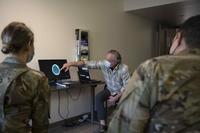SOURCE: VAntage Point Blog
By Michael Dakduk
The Post-9/11 GI Bill is enabling hundreds of thousands of recent Veterans to obtain the education they need for success during and after their military service. Unfortunately, it is challenging to determine program completion rates or degree conferral. We know how many Veterans receive funds and how much money has been spent, but not the explicit results achieved by this investment. Today Student Veterans of America(SVA) and VA announced a major step in changing that.
SVA, working with VA and the National Student Clearinghouse, will lead an effort to research the completion rates of Veterans and their dependents using the Post-9/11 GI Bill. This is an unprecedented effort, and rarely has a government program been studied for efficacy during its execution. We firmly believe it is essential to know just how successful our student Veterans have been as they take on their next mission in the classroom.
The original GI Bill of Rights, officially known as the Servicemen’s Readjustment Act of 1944, enabled World War II Veterans to obtain higher education at an unprecedented rate and ultimately changed the economic landscape of our nation. It is said that every dollar spent was returned to the nation sevenfold in increased tax revenue as the middle class, full of returned GIs, grew exponentially. Less commonly known is that the GI Bill’s statistical outcomes were not measured until many years later, when researchers began to study the return on this remarkable investment.
Under today’s GI Bill, the challenge of rapidly collecting and reporting accurate statistics on Veterans’ achievement remains. One journalist recently reported that up to 88 percent of Veterans will drop out in their first year, although he has not provided any proof to justify this claim, and SVA has called the statistic patently false. Negative and misleading statistics about how well Veterans are doing in their educational programs discourage Veterans from trying to achieve their dreams—and could make educational institutions less likely to invest in the critical support infrastructure Veterans need to succeed.
Earning a degree or completing vocational training offers Veterans an opportunity to combine their military leadership experience with a civilian credential, paving the way to lead in their next endeavor. It is essential that we know how well they are doing, where the difficulties lie, and how we can effectively allocate both government and nonprofit resources to support them. And as the federal budget continues tightening, we must be able to accurately tell the story of how our investment in the men and women who have defended this nation is helping them realize their aspirations and strengthening our economy.
SVA stands ready to help all Veterans as they work toward their educational and training goals, enter the workforce, and continue to lead this great nation. We are very excited to begin this research and will report back with results as we discover them.
Michael Dakduk is the executive director of Student Veterans of America. He is a U.S. Marine Corps Veteran, with service in Iraq and Afghanistan.



